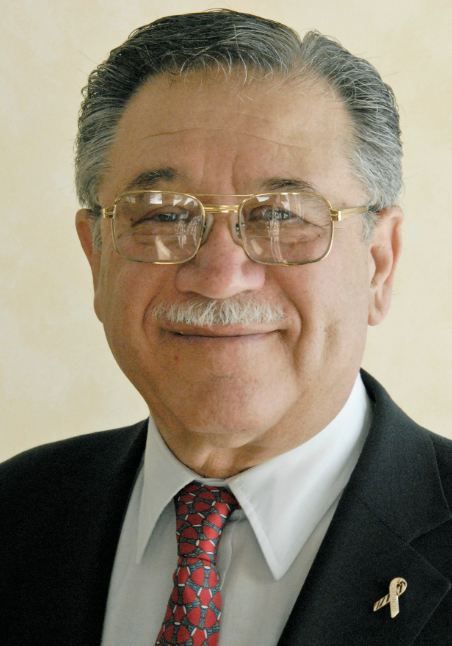Understanding Neuroendocrine Tumors and Carcinoid Syndrome
Misdiagnosis of neuroendocrine tumors remains an ongoing challenge, and a recent international study involving more than 100 countries and nearly 2000 patients revealed the average case takes between 5 and 9 years to properly diagnose after the first symptoms appear, and the average patient may see five or six doctors.
Richard R.P. Warner, MD

Richard R.P. Warner, MD
Neuroendocrine tumors (NETs) are rare, difficult to diagnose, and can be found nearly anywhere in the body. More than 100,000 people in the United States are living with NETs, and that number is increasing by 5% every year, as the medical profession becomes more aware and diagnostic techniques have improved.
Yet misdiagnosis remains an ongoing challenge, and a recent international study involving more than 100 countries and nearly 2000 patients revealed the average case takes between 5 and 9 years to properly diagnose after the first symptoms appear, and the average patient may see five or six doctors, noted Richard R.P. Warner, MD, in an interview with Oncology Nursing News.
“You can’t detect it, if you don’t suspect it,” said Warner, who directs the Center for Carcinoid and Neuroendocrine Tumors at Mount Sinai Hospital. Most doctors will only see one or two cases in their lifetime, and symptoms of NETs, like diarrhea and recurrent episodes of flushing, are associated with other, more commonly seen conditions.
He added that to complicate matters even further, “no two samples of tumors are exactly identical.” The treatment has to be customized for each case and depends on where the tumor is located and how much it has spread.
Carcinoid tumors are the most common type of NET, and about two-thirds appear in the gastrointestinal (GI) system, particularly in the small intestine, rectum, stomach, colon, and liver. Up to 40% of GI carcinoid tumors produce enough hormone substances to create symptoms, and this is called carcinoid syndrome. The syndrome occurs more rarely (<10%) with lung carcinoids. The syndrome is characterized by diarrhea and a dry (unlike the more moist menopausal) flushing; patients typically will get hot and red in the face, Warner noted.
“In many cases, the symptoms of carcinoid syndrome are worse than the symptoms from the growth of the tumor itself,” noted Laura Metcalfe, MSN, RN, APN-C, AOCNS, an advanced practice nurse at John Theurer Cancer Center in Hackensack, New Jersey. “For those patients experiencing the sometimes intractable diarrhea, their quality of life can be greatly impacted.”
A novel agent, telotristat etiprate, has produced promising results for the relief of the diarrhea associated with carcinoid syndrome. In the phase III TELESTAR trial reported at the 2015 European Cancer Congress, the oral agent reduced the number of daily bowel movements by 35%. Warner explained that the drug blocks the tumors from manufacturing an excess of serotonin, which accounts for much of the diarrhea.
On February 26, 2016, the FDA approved everolimus (Afinitor) for the treatment of adult patients with progressive, well-differentiated non-functional NETs that are of GI or lung origin. Data from the RADIANT-4 study showed that the agent, which was previously approved for patients with progressive, metastatic pancreatic NETs, led to significant improvements in progression-free survival in patients with locally advanced or metastatic GI and lung NETs, and adverse events were consistent with the known safety profile for everolimus.
Somatostatin analogs, a synthetic hormone therapy, are a standard treatment for NETs. A new drug lanreotide (Somatuline Depot Injection) received FDA approval in December 2014 and marked the first drug in this class to demonstrate a statistically significant improvement in progression-free survival.
As with the majority of rare cancers, practitioners should seek out advice from specialists when they suspect a patient has carcinoid or other NETs. Warner said that he often gets phone calls from community-based physicians, and he recommends that practitioners contact the Carcinoid Cancer Foundation (CCF), which lists specialists in every state on its website and can also refer patients to support groups.
A group like CCF is especially helpful, Warner noted, because “patients are often adrift when they get this diagnosis, and their doctors may not be familiar enough with it to give them valid information.”
“These tumors should not be treated and do not behave the same way as ordinary cancer,” stressed Warner. It is sometimes referred to as “cancer in slow motion”:
“Because of that, some people erroneously consider it benign. It’s not. It’s cancer, but it’s very slow.”
More Resources …
The Carcinoid Cancer Foundation (Carcinoid.org), founded in 1968, has been voted the #1 best resource for information on carcinoid, notes expert Richard Warner, MD. In addition to information and resources for healthcare professionals and patients, CCF hosts support groups in states across the country and internationally. The Neuroendocrine Tumor Research Foundation (previously known as Caring for Carcinoid) supports research to discover cures and more effective treatments, and also provides information and support for those affected by NETs (NETRF.org).

Innovative Program Reduces Nurse Turnover and Fosters Development
Published: September 12th 2024 | Updated: September 12th 2024The US Oncology Network (The Network) has developed one of the most comprehensive programs in the nation to support the professional development and retention of new oncology nurses.


